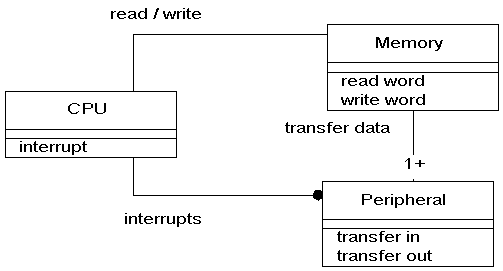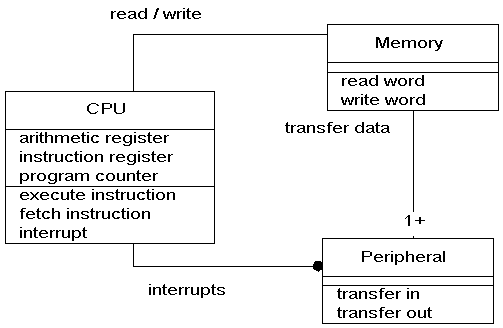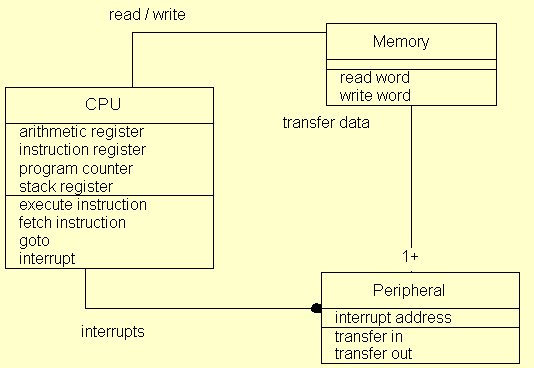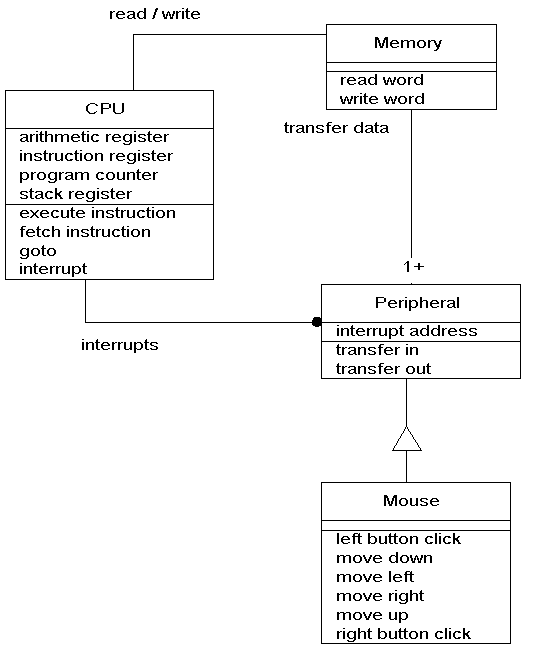
- •BlackBox
- •Component Pascal Language Report
- •1. Introduction
- •5. Constant Declarations
- •6.1 Basic Types
- •6.2 Array Types
- •6.3 Record Types
- •6.4 Pointer Types
- •6.5 Procedure Types
- •6.6 String Types
- •7. Variable Declarations
- •8. Expressions
- •8.1 Operands
- •8.2 Operators
- •8.2.1 Logical operators
- •8.2.2 Arithmetic operators
- •8.2.3 Set operators
- •8.2.4 String operators
- •8.2.5 Relations
- •9. Statements
- •9.1 Assignments
- •9.2 Procedure Calls
- •9.3 Statement Sequences
- •9.4 If Statements
- •9.5 Case Statements
- •9.6 While Statements
- •9.7 Repeat Statements
- •9.8 For Statements
- •9.9 Loop Statements
- •9.10 Return and Exit Statements
- •9.11 With Statements
- •10. Procedure Declarations
- •10.2 Methods
- •10.3 Predeclared Procedures
- •Function procedures
- •Proper procedures
- •10.4 Finalization
- •11. Modules
- •Appendix a: Definition of Terms
- •Array compatible
- •Parameter compatible
- •Expression compatible
- •Appendix b: Syntax of Component Pascal
- •Appendix c: Domains of Basic Types
- •Appendix d: Mandatory Requirements for Environment
- •Object Lesson 1 - objects and inheritance
- •Introduction
- •Course Aims - Creating Beautiful Systems
- •Why Design?
- •Design methods
- •Objects
- •How do objects relate to other concepts in design methods?
- •Inheritance
- •The big deal about inheritance
- •Clarity
- •Delegation
- •Relationships
- •One to one relationships
- •One to many relationships
- •Many to many relationships
- •Object Models
- •Exercises
- •Object Lesson 3 Analysis - the rudiments of an approach
- •Removing synonyms and/or generalising
- •Look for attributes
- •Irrelevant objects
- •The process of development
- •Prototyping
- •Evolutionary development
- •Charters
- •Why object modelling lends itself to iterative methods
- •Lesson 4 - Dynamic Modelling - Event traces Dynamic Modelling
- •Event traces - building scenarios
- •Progressing the analysis with event traces
- •What do you do with the event traces?
- •Dynamic modelling - state diagrams
- •An example of an object model for a simple computer
- •An object model for genetic algorithms.
- •Business Activity Modelling - a Starting Point for Software Development Applied to The Functional Specification of a System for Planning Elderly Care in the European Community (planec)
- •Abstract
- •Functional modelling - data flows
- •Use Cases
- •Opening up the use-case requirements model
- •Conclusion
- •Business Process Reengineering
- •Conclusion
An example of an object model for a simple computer
Let us look at the example of designing a computer. Of course, one is unlikely to be asked to design a computer this way, but it is an interesting way of exploring the method so far using a relatively complicated application that computer scientists are familiar with. Our first notions of a computer might be:

The CPU (central processing unit) reads and writes words to and from memory. A peripheral (such as a keyboard or screen) has information transferred to or from memory. A peripheral can also interrupt the CPU. (For the non-computer scientist venturing this far, an interrupt is an electronic signal which forces the CPU to jump to a special instruction stored in memory). There needs to be at least one peripheral to make the computer useful (intraverted computers are of little use). However, not all peripherals use interrupts, so it is possible to have a CPU without interrupts (unlikely, but some simple computers operate this way).
Some careful thinking might open up the operations and attributes thus:

Let us now look at an event trace for an instruction to add two integers (stored in memory) and to put the result back into memory.

This does not tell us about any new operations, but careful consideration of the above indicates that the CPU needs somewhere to store the first integer (at least). Internal storage in a CPU is normally called a register. So our object model for a CPU grows just a tiny amount.

Exploring more instructions is not likely to yield too much more. However, let's look at the state diagram for the CPU.

The CPU loops endlessly, fetching instructions and executing them. We can see from this state diagram that the CPU needs somewhere to store the address of an instruction. It is also clear that there is a need to store an instruction retrieved from memory. Our object model grows a little more.

We have added two more attributes - an instruction register to store the instruction, and a program counter to store the address of the next instruction to be fetched. We have two more operations, fetch instruction and execute instruction.
Let us now look at an interrupt.

An interrupt causes the CPU to start executing a routine stored in a pre-defined location in memory. Before it does that, however, it needs to remember where it is in the program it is executing. The normal way of doing this is to keep a stack, the top of which contains a sequence of addresses of partially complete routines. This implies the need for a stack register, to store the address in memory of the top of a stack. We can model the response of the interrupt by the CPU by extending the state diagram for the CPU.

Basically, the interrupt changes the address of the next instruction which the CPU is to execute. The response to the interrupt must also store the address of the next instruction on the stack.
We now can modify the object model further:

We need to add a stack register to the CPU to store the address of the top of the stack in memory. Also, we need to know the address of the interrupt routine which the CPU must go to when an interrupt takes place. This can be stored as an attribute of the Peripheral, as there is likely to be a different interrupt address for each peripheral. Finally, we can record the goto operation as a special operation for the CPU, which simply changes the address in the program counter.
Now let us be a little adventurous and add a peripheral. Let us put in a mouse.

A mouse, if you take it apart, has two little rollers recording movement in two directions (vertical and horizontal, say). Every tiny movement of the mouse causes the one or both rollers to register a movement and interrupt the CPU. The CPU therefore gets a continual stream of interrupts as the mouse is moved. It then needs to decide what to do (move the cursor on the screen, or whatever). A move which is not vertical or horizontal will send a mixture of vertical and horizontal messages to the CPU.
The mouse inherits the transfer in and transfer out operations for passing information to the memory. One way the mouse might use these is to have two locations in memory to record how far the mouse has moved in the vertical and horizontal directions.
